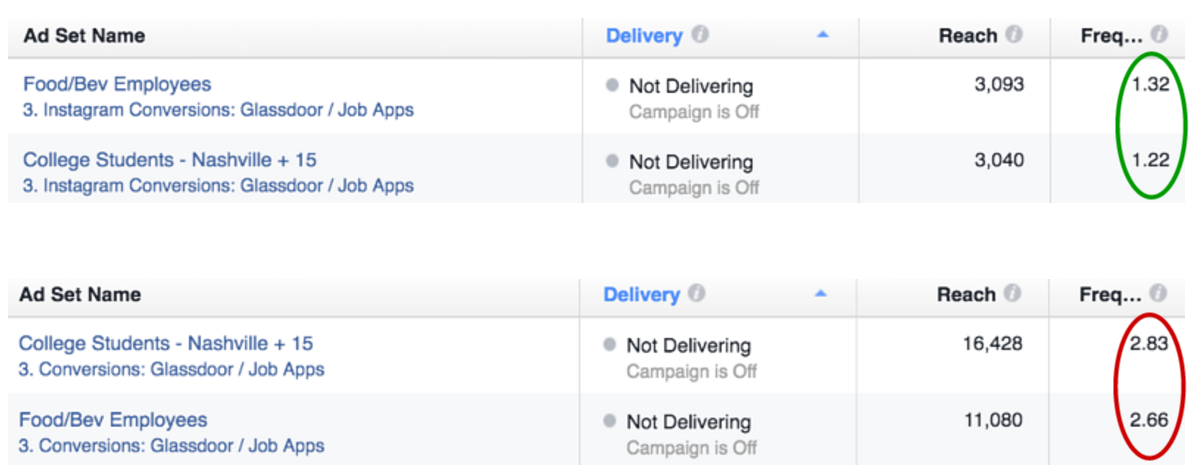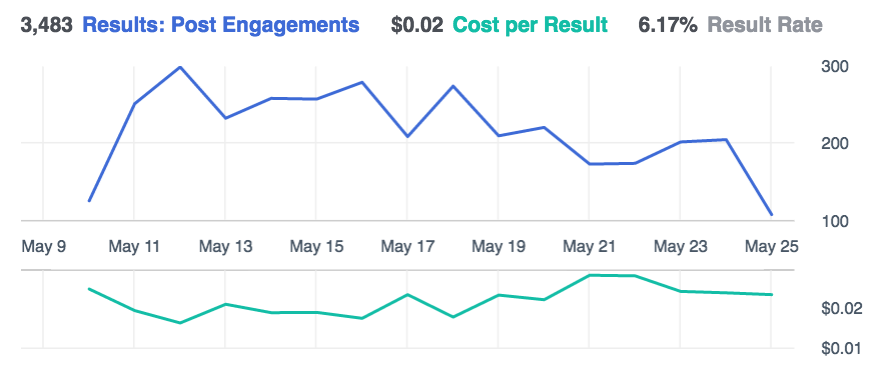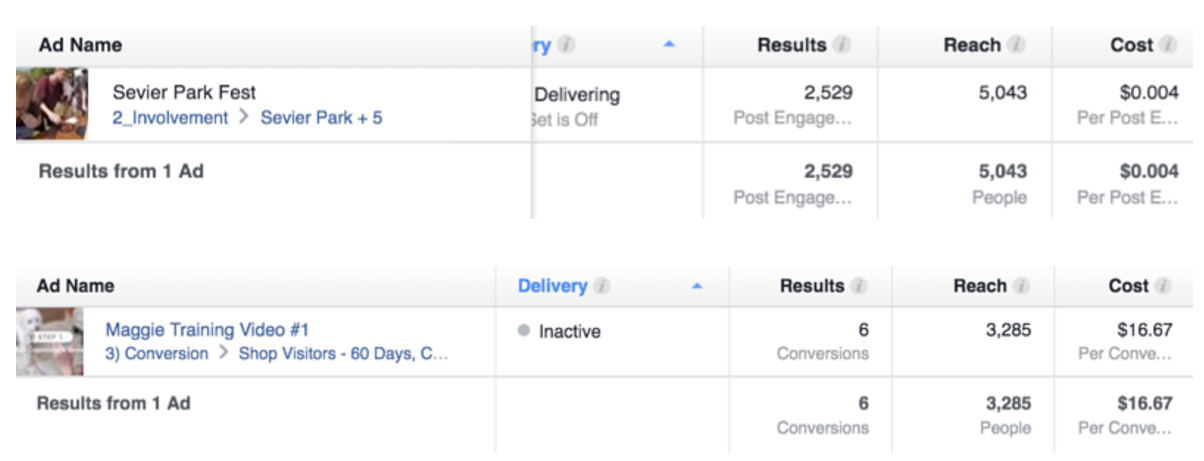There’s more to a successful Facebook advertising campaign than hitting the boost button.
While it is important for your brand to have a social media marketing strategy in place, your ads don’t necessarily have to have a long shelf life. There are certain benchmarks to check for when determining when to move the toggle from blue to white.
Whether it’s your first time running a Facebook campaign, or you’ve developed a career in this practice, take note of our factors we consider when choosing the longevity of our clients’ social ads.
1. Frequency
If you’re new to the Facebook Ads game, frequency is the average amount of times your content has been viewed by the members in your targeted audience. You can view your ad’s frequency by switching your column view in Ads Manager to show Delivery. Our general rule of thumb is to turn off any content once the frequency surpasses 2.0. Depending on your audience size and budget, this could happen in a matter of hours, or weeks. For instance, if my fan base is only 750, Facebook may serve my ad to all of those users rapidly, and you may find your frequency climbing. However, with larger audiences, such as Lookalike audiences, you could have a campaign running for weeks and never cross 2.0.

Shown above is an example of a previous ad campaign conducted for Edley’s Bar-B-Que. The top image shows an ad placement ran on Instagram, with a lower frequency. The bottom image shows the same ad with mobile placement enabled, whose frequency climbed quickly. If this campaign were to still be active, the top placement could still run to reach all members of the audience, and the bottom one would be paused.
2. Result Rate
The result rate is a key factor in determining an ad’s life because you can quickly see how your audience is consuming the content. Are they liking and sharing your ad, or do they keep scrolling? If the performance seems to be better classified by the latter, pause this ad and refresh your content. Perhaps rephrasing your copy or swapping out the image will make your consumers engage with the advertisement. (Nothing wrong with a little A/B testing!)

The above graph illustrates the engagement rate of an ad we ran for Bart Durham Injury Law. The top, blue line measures the activity of the objective over the life of your campaign. The bottom, green line measures the cost per result (which we’ll discuss in the next point). Ideally, you want the blue line to be high, meaning that your result rate is high, and the green line to be low, which is your cost per result. When you start to see this relationship invert, such as the activity on May 17, it’s time to consider revising your current content, or pausing the ad.
3. Cost per Result
Depending on what type of campaign you’re running, you’ll need to monitor your Cost column. For instance, engagement campaigns are measured in CPEs (cost per engagement), website clicks campaigns are measured in CPCs (cost per click), and conversion campaigns are measured in (the other) CPC (cost per conversion). This value is calculated by the amount spent divided by the total actions that have occurred, due to your ad.

This example shows two different campaigns, and how different cost per results are depending on the client and what they are selling. The first ad was to promote an Edley’s Bar-B-Que wing eating contest. The cost per post engagement was less than $0.01, which is the type of result to strive for when working with a client in the food industry. In contrast, the objective of our conversion campaign for iFetch was to sell their automated ball launcher for dogs, which retail anywhere from $39.99 to $199.99. A CPC of $16.67 is fairly good, especially if the product being purchased is nearly $200. However, we still strive to provide a lower cost per result, never settling for the same result.
Final Thoughts
There is no magical value to abide by when deciding if your ad should continue to run or not, because every cost per result has a different value to the client. As simple as this may sound, the cost per result for selling a barbecue sandwich should be significantly lower than trying to gain a new client for a law firm. This is where communication between yourself and the client is crucial. Calculate what their cost per lead is, and make it a personal goal to bring in cheaper results through Facebook advertising. As you continue to test out your ads, you’ll find that making adjustments using the above steps help reach these benchmarks.
Want more advice on Facebook Ads?

